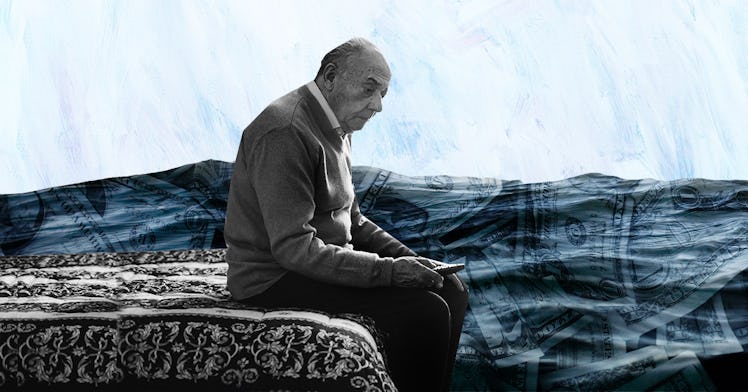How the Sandwich Generation Can Benefit From Biden’s Infrastructure Plan
The caregiving crisis is coming.

As the Senate and House start their full sprint towards passing the $3.5 trillion “human infrastructure” package and the smaller “hard infrastructure” package alongside it — funding child care while also funding roads, talking paid leve while also talking rural broadband — a new group of people who would benefit from the package is starting to speak out. That group? The massively growing population of seniors, and their adult children who are caring for their parents while taking care of their own kids.
While paid leave is often discussed as a way to help new parents heal from giving birth and spend much needed time bonding with their babies, their partner if they have one, and adjusting to the new rhythms of their life, paid leave isn’t just for people who are having babies.
Paid leave is called paid family and medical leave for a reason. It lets people take time off if they fall ill but also, and perhaps even more crucially, lets people take paid time off if a loved one falls ill.
Why does that matter? Because 1 in 5 American adults provide some amount of unpaid family care outside of being a parent.
About 53 million American adults are caregivers to their aging parents while also parenting their own children; 23 percent of millennials, 39 percent of Gen Xers, and 39 percent of boomers report being caregivers. Half of all adults have a parent aged 65 or older and are raising a kid, meaning that the number of parent caregivers is primed to grow dramatically.
And it’s not just about the stress of time and care. It’s also about money: parents often provide financial support to their own aging parents, as there isn’t much of a social safety net for middle-class elderly people. Simply put, the United States’ long-term care system, if you can even call it that, is broken.
Vox reported on the issue in June, pointing out the lack of major funding for keeping people in their homes and moving into long-term care homes and that the few social programs that do exist largely only serve the aging poor.
“Right now, the US doesn’t provide any government assistance to middle-income people who need long-term care,” Vox reporter Dylan Scott wrote. “You are either wealthy enough to pay for your own care or you have to spend enough of your own money on long-term care services that you become poor enough to qualify for Medicaid, and then that program takes responsibility for your bills.”
The aging poor suffer in not-so-great retirement conditions and the aging middle class goes into bankruptcy. Their children are left to fill in the gaps while raising kids of their own.
And as Boomers get older, the problem is likely to worsen. Molly Day, the Executive Director at Paid Leave for the US (PL+US), a nonprofit advocating for paid leave for all, says that the population of Americans age 65 and up has nearly doubled since 2000.
“As the population of older Americans has grown, making sure that everyone has the paid time off they need to care for their loved ones is more important than ever. This need is even more pronounced among the 15 percent of sandwich generation parents who may be juggling care needs for both children under 18 and older parents along with their careers.” (“Sandwich generation” is the term for middle-aged people caring for their parents and kids simultaneously.)
As Fatherly has previously reported, lower-income workers are more likely to need paid leave than those who work in offices, as white collar companies are more likely to provide paid leave as a benefit on their own. Women and people of color are 66 percent and 83 percent less likely to be able to take leave when they need it compared to white workers, respectively. The lack of paid leave reinforces the racial wealth gap, keeps families in poverty, and harms parents and their children of all ages.
Congress will spend the next few weeks debating the Build Back Better Plan, which includes a national paid family and medical leave plan. It would be the first of its kind, a long-overdue expansion of the social safety net in the only developed nation in the world that doesn’t already offer a federal paid leave program to workers. The best hope for American families is that Congress look at the current and future crisis, teetering towards families like a slow-moving, off-kilter ship, and finally acts to protect them.
This article was originally published on